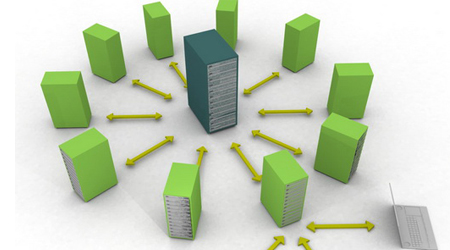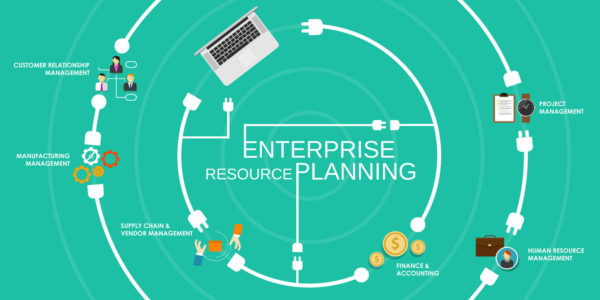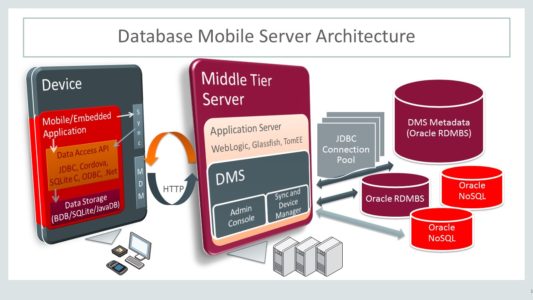Absolute Overview of Computer Database Systems
by Michael Phillip · November 26, 2016 Database Systems

What is Database Systems , Management and Examples
At present world, almost every company or industry from the very beginning to professional level need to store their information. Because without storing information, a company or an industry doesn’t maintain their services or purposes successive way. For this reason, a company or an industry needs a system which store their information and other activities like company analysis, statics as well as profiles in a program. That program system is known as Database Systems.

Database System:
A database management system (DBMS) is a collection of data that are interrelated with one another. Making linkage between the storing data and a set of programs, which helps to access the storing data anywhere or a particular location. This total system is referred to as the database that contains information which is more relevant to an enterprise solution. The main goal of a database system is to provide a way to store and retrieve data in more convenient and efficient way.
Database System Basics & Concepts:
A database is a combination of logical and physical thing that can coherent a collection of data, that has some inherent meaning. Besides, it must have to represent some aspects that are related to the real world and designed for that. Besides, the other purpose of database to build and populated data for the organizations or industries.
System
The entire database management system can enable user to maintain and create a collection of programs in a database systems. Database systems is the combination of the database and database management system (DBMS) software. Both of them are interrelated with each other in the entire database management systems.
Database System Structures:
The common definition of database system is, “It is a computer software application that interacts with the user, other applications, and the database itself to capture and analyze data. A general-purpose DBMS is designed to allow the definition, creation, querying, update, and administration of databases.”
Database Management System (DBMS) acts as an interface between the user and the database. Via DBMS the user can send request to the application so that the application can perform different types of arithmetic and logical operations like insert, delete, update, retrieve data on the database.
Here the entire DBMS works as a component that perform on user request and provides the necessary data what the user actually needs. Database System Structure are divided into units for different functions. Some functions may be as long as by the operating system. Let see them on details in below.
Applications:
This component considers as a flexible web page for the users. In this component, theuser can enter and request data that he or she need in details. Without applications, it cannot be done.
End User:
The real users are known as the End User of the database system. Like, developers, designers, administrator. There are several or particular tasks for every End User to maintain and design the entire database.
Data Definition Language (DDL):
Data Definition Language (DDL) is known as a query in database environment. It used for creating database, schema, tables, mapping in the database system. It also called as human readable language.
DDL Compiler:
It is a part of the database management system via which medium the Data Definition Language (DDL) can response. The DDL compiler breaks the DDL for the machine understandable codes. This compiler also responsible for the storing the metadata information like name of the table and other attributes.
DML Compiler:
To get the response from user upon request like inserts, deletes, updates or retrieves the record from the database, it really need to broke down some object based codes for understandable to machine. Which is done by the Data Manipulation Language (DML) Compiler.
Query Optimizer:
In a database system, the query optimizer helps the users to offer the best way to get their request.
Stored Data Manager:
Stored Data Manager is the main control system of database system. This component is responsible for different types of task. The main three tasks perform by the stored data manager are.
- Transaction Manager
- File Manager
- Buffer Manager
Besides of these, the stored data manager also maintains the consistency and integrity problems of the database system. So, any duplicity of data can be controlled by the help of stored data manager component.
Compiled DML:
By this component the similar request from the user like insert, update and delete can be reused in future purposes.
Data Dictionary:
It’s a kind of documentation model of database system. In this component, the all information about the database system is stored here. Like name suggestion, view, constraints, indexes, triggers etc.
Database System Architecture& Administration:

Every software system has an architecture like possessing of a structure and organization of different functionality. In this situation, the database systems is not exceptional from it. The total architecture of a database systems provides the capability, reliability, effectiveness and others security issue that can be efficient of course fulfillment the demands of certain requirements from the users. A good database system has an ideal architectural system that should provide certain purposes. The purposes are given below.
- Independence of data and programs
- Ease of system design
- Ease of programming
- Powerful query facilities
- Protection of data
The above features are really important for the maintain in large organizations to control the data centrally. To control data from the centrally is not for single user department jobs, it should manage by someone who known as Database Administrators (DBA). A database system administrator has numerous responsibility to maintain the database what is design based on database systems architecture and corresponding structural components including some functionality such as, creating, expanding, protecting and maintain the all kinds of integrity and atomicity criteria.
There are several functions or tasks that should done by a database system administrator. these are:
- Creating a database system.
- Design a conceptual schema with logical view.
- Act like a medium between users and the database system.
- Ensuring data privacy, unauthorized accessing and others security issues.
A real-world database system is always need to some specific modification that can be performed by the database system administrator. So, from the experience DBA may expect periodic changes in database for upgradation. Like,
- Improving the performance of overall database systems
- Changing the conceptual and internal schemas based on user interaction
- Adding new application that can meet the very recent criteria
Additionally, DBA has some right or responsibility to analysis the current data interface and also takes some step to optimize the overall performance of the database. This is called the restructuring changes that implies its conceptual schema contents. They are:
- Adding or removing data item like attributes from the tables.
- Adding or removing the entire relation like an entire tuples or tables.
- Joining or splitting the relations.
- Changing the procedural relations based on primary and foreign key references.
Database System Design, Implementation & Management:
The entire topic can be divided some other sub categories. By discussing the sub categories, the idea behind the design, implementation and management of a database system can be more clarify to us.
Bottom Up Design:
This design is a kind of philosophy with the beginning of the identification that contains an individual design components and other aggregates function into larger units. It is also known as top down design.
Centralized Design:
This design process connection with smaller number of objects and procedures with the other single conceptual design module to an organization database as per requirements.
Conceptual Design:
It is a process that ensure the data modeling techniques that create a model of a database structure. This design module can represent the real-world objects and functions. This objects and functions should be expressed more realistically as much as possible. The overall technique in this design module is used for both in software and hardware independence module.
Decentralized Design:
These design modules are typical of that can express the complicated systems in which the data component has a relatively a huge number of objects, functionality and other procedural things.
Logical Design:
In this design process the entire logical design is used to translate the conceptual design into the breakdown module system. This module system used for internal model of a particular database management system. Like, DB2, SQL Server, Oracle, IMS, Informix, Access or Ingress.
Physical Design:
A stage of database design that maps the data storage and access characteristics of a database. It makes a connection between the logical and another design module. So, user can be get a friendly environment to writing codes for maintaining, creating, inserting or updating database system.
Top Down Design:
In this design procedure, the entire database system can bvery first identifythe entities and other attributes that are related within the entities.
There are other several design modules that helps to design, implement and used for management the database systems. Like,
- Boundaries
- Cluster Tables
- Cohesivity
- Computer Aided System Engineering (CASE)
- Database Development
- Database Fragment
- Database Life Cycle (DBLC)
- Database Role
- Description of Operations
- Differential Backup
- Database Dump
- Scope, System Analysis and Visualization
Database System Functions and Features:

Every database system has some functionality and features. By these types of functions a database system can be managed more flexible and make the database system environment that becomes more user friendly. The most important functions of database management system are given below.
- Data Dictionary Management
- Data Storage Management
- Data Transformation and Presentation
- Security Management
- Multi User Access Control
- Backup and Recovery Management
- Data Integrity Management
- Database Access Languages and Application Programming Interfaces
- Database Communication Interfaces
Database System Advantages and Benefits:
The database system application has many advantages and benefits for the today’s technology world. Each of the technology related company like Facebook, Google, Microsoft has their own database manage system. If there are no advantages or benefits of it, then no tech related company cannot use this system so widely. Let’s show some specific advantages and benefits of database system.
- Controlling redundancy can be ensure by the database system management
- Integrity can be enforced to reduce duplicity
- Inconsistency can be avoided
- Data can be shared between multiple machines located from different places in the world
- Standards can be enforced to understandable to users or administrators
- Restricting unauthorized access cannot be permitted
- Solving enterprise requirement than individual requirement
- Providing backup and recovery services
- Cost of developing and maintaining system is lower than drawback file system management
- Data Model can be developed by multiple users or administrators without present at a time
- Concurrency Control can be acceptable in database system
Database System Applications:
Databases are widely used. Here mentions some application that are commonly used.

Overview of Database System
Enterprise Information
Sales management in a shop, human resources of a company, manufacturing, online retailers where the important information about the products, customers, suppliers are stored.
Banking and Finance
Banking, credit card transactions, finance, universities, airlines, telecommunication sectors where all kind of money transfer, money saving information as well as student tuition fee and employees’ salary, airlines schedule and telephone bills are stored.
Besides of above applications, there some world top biggest database system. Like, Library of Congress, Amazon, YouTube , ChoicePoint etc.
From the above discussion, it is barely clear that, all kind of modern commercial database systems has one ideal goal to develop the industrial strength products for the high-end customers. To using a database system from the very small area to widen area, it will be an enormous investment that saves time and energy to a particular organization or industry.


















